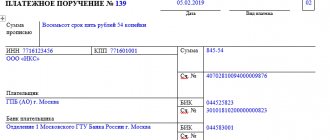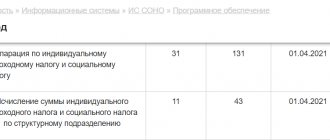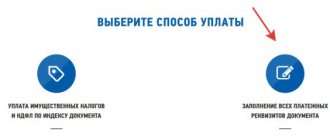VAT when importing equipment is paid at a rate of 18% (except for cases of exemption from payment of indirect taxes when importing certain types of goods into Russia) directly at customs (before the actual release under the chosen customs procedure), except for cases of import from the EAEU countries, when VAT is paid in Inspectorate of the Federal Tax Service at the place of tax registration of the importer. VAT when importing equipment is paid by all organizations (enterprises) and entrepreneurs, regardless of the taxation system applied (i.e. including UTII, Unified Agricultural Tax, simplified taxation system) and whether the total revenue for the three previous calendar months was less than 2 million rubles.
VAT when importing equipment into the Russian Federation is calculated as a percentage of the amount of customs value, customs duties and excise taxes (if the imported cargo is excisable). At the same time, the excise tax itself is considered as a percentage of the amount of customs value and customs duties, and the customs value includes not only the contract price, but also the costs of delivering imported equipment to the Russian Federation. At the same time, the customs authority (Federal Customs Service, Federal Customs Service of the Russian Federation) retains the right to apply customs value adjustments (CTS), which will lead to a change in the tax base, and subsequently the amount of value added tax paid.
VAT on equipment is paid regardless of whether the import is carried out independently or through an intermediary (agent). The obligation to pay VAT rests with the declarant, who can be the contract holder (the actual importer) or his intermediary - a customs representative (broker) or even a carrier. If VAT is paid through an intermediary, he will be required to provide payment documents confirming the payment of indirect taxes for subsequent VAT deduction. The agent's payment documents must be accompanied by documents confirming the reimbursement of expenses incurred by the intermediaries by the recipient of the equipment.
VAT on the purchase of imported equipment must be paid within 15 days from the date of receipt of the goods at customs, but no later than the submission of the customs declaration for goods (DT, previously - cargo customs declaration, CCD). If imported equipment is supplied from the countries of the Eurasian Economic Community (EAEC) - Belarus, Kazakhstan, Armenia or Kyrgyzstan - then VAT must be paid to the Federal Tax Service no later than the 20th day of the month following the month the equipment is registered and registered in the purchase book. In this case, the fact of import and the amount of indirect taxes is confirmed not by the DT, but by the VAT declaration.
VAT is not paid when importing equipment in the following cases:
- is technological equipment, analogues of which are not produced in the Russian Federation and the import of which is carried out without paying VAT (according to the Decree of the Government of the Russian Federation of April 30, 2009 No. 372 with amendments and additions)
- imported under customs procedures (regimes) or under the conditions stated in Art. 150 of the Tax Code of the Russian Federation, which do not imply use in transactions subject to indirect taxes;
- import of medical equipment is carried out (according to paragraph 2 of Article 150 of the Tax Code of the Russian Federation and Decree of the Government of the Russian Federation of January 17, 2002 No. 19, vital medical equipment is not subject to indirect taxes);
- if the imported equipment is subsequently contributed to the authorized capital of clause 7 of Art. 150 of the Tax Code of the Russian Federation).
Calculation of VAT when importing goods
Import operations of goods to Russia have their own registration procedure. Payment of import VAT occurs at the time of registration of the customs declaration. In this case, the tax must be paid before the goods are released from the customs procedure.
To calculate the amount of import VAT, the tax base is multiplied by the VAT rate.
The tax base includes the following amounts (Article 160 of the Tax Code of the Russian Federation):
- customs value of purchased goods;
- customs duty;
- excise tax amount (if the goods are excisable).
Payment of import VAT occurs directly at the customs office, and the recipient will be the customs authority. An exception is the import of goods from the countries of the Eurasian Economic Union (EAEU). In this case, the tax is transferred to the Federal Tax Service, where the purchasing company is registered.
Thus, VAT when importing goods, for example, from Uzbekistan, is calculated and paid from the sum of the customs value of the goods and customs duties. Along with VAT, the importer also pays other customs duties.
The tax amount is calculated by the submitter of the customs declaration independently. VAT must be recorded in the purchase ledger. The customs declaration is also registered there.
VAT on import of equipment
The import of equipment is subject to VAT according to the same rules as the import of goods:
- the buyer pays tax regardless of his legal status;
- The tax is paid directly at customs before the equipment is released (exception is the import of equipment from the EAEU countries).
The tax is calculated at a twenty percent rate from the sum of the customs value and customs duties. Please note that the cost of the equipment, in addition to the contract price, also includes the cost of delivery.
The import of equipment is exempt from taxation if it is technological and has no analogues in the Russian Federation. The list of such equipment was approved by Government Decree No. 372 of April 30, 2009. The import of special medical equipment is also not subject to VAT (clause 1, clause 2, article 149 of the Tax Code of the Russian Federation).
Installation of equipment: problems with VAT
Disputes about the deduction of VAT on equipment requiring installation continue. Tax officials do not want to give up their positions and say that the deduction should be delayed until the facility is put into operation. You can argue with their opinion.
Not every basic product can be used immediately after purchase. Often equipment needs to be specially installed and assembled. Installation work, as a rule, consists of equipment being assembled from separate parts and attached to the floor, ceiling or foundation. What will interest us as accountants in this process? First of all – VAT. The fact is that when purchasing such equipment, the company receives input VAT both on the cost of the equipment itself and on the cost of installation work. It does not matter whether the assembly is carried out by a third party or the company installs the property on its own. In the first case, VAT will be included in the price of someone else’s work, and in the second - in the cost of materials purchased for assembly.
According to the norms of the Tax Code, input VAT can be taken as offset. The only question is – when?
On one side of the barricades
Basically, disputes are related to VAT on installation work. It follows from paragraph 5 of Article 172 of the Tax Code that the tax included in the cost of installation work carried out by a contractor can be deducted only in the month in which depreciation on the equipment begins. Moreover, officials like this clause so much that they include input VAT on the equipment itself that requires installation. That is, in their opinion, both input taxes can be deducted no earlier than the property actually begins to be used. A similar point of view was expressed, for example, in a letter from the Ministry of Finance dated March 26, 2001 No. 04-03-11/55.
Thus, officials believe that VAT on equipment and installation work can only be deducted in the month following the month in which the object is registered in account 01 “Fixed Assets”. That is, in the month when depreciation begins.
Example
CJSC Aktiv purchased equipment in June 2004 worth RUB 2,360,000, including VAT - RUB 360,000. In the same month, a third party was invited to install the equipment. The cost of her services amounted to 354,000 rubles, including VAT - 54,000 rubles.
The equipment was assembled and put into operation in July 2004. Consequently, the company will begin accruing depreciation on it from August 2004.
The Aktiva accountant reflected these transactions in the accounting records:
in June 2004
Debit 07 Credit 60
– 2,000,000 rub. (2,360,000 – 360,000) – reflects the cost of purchased equipment;
Debit 19 Credit 60
– 360,000 rub. – VAT on purchased equipment is reflected;
Debit 60 Credit 51
– 2,360,000 rub. – paid for purchased equipment;
Debit 08 Credit 07
– 2,000,000 rub. – purchased equipment was transferred for assembly;
Debit 08 Credit 60
– 300,000 rub. (354,000 – 54,000) – the cost of installation work is included in the equipment;
Debit 19 Credit 60
– 54,000 rub. – VAT on installation work is reflected;
Debit 60 Credit 51
– 354,000 rub. – installation work has been paid for;
in July 2004
Debit 01 Credit 08
– 2,300,000 rub. (2,000,000 + 300,000) – installed equipment was put into operation;
in August 2004
Debit 68 subaccount “Calculations with the budget for VAT” Credit 19
– 414,000 rub. (360,000 + 54,000) – accepted for deduction of VAT on equipment and installation work.
On the other side of the barricades
According to another opinion, VAT on purchased equipment that requires installation can be deducted earlier. Namely, from the moment when the equipment is recorded on account 07 “Equipment for installation”. This opinion is supported by the Supreme Arbitration Court.
In the Resolution of the Presidium of the Supreme Arbitration Court of February 24, 2004 No. 10865/03, the judges indicated that VAT on fixed assets requiring installation can be reimbursed as soon as they are registered. Moreover, if a company buys equipment that requires installation, then it is not yet a fixed asset, which means it is reflected in account 07 “Equipment for installation.” At the same time, the judges believe that this is the very “acceptance for accounting”, after which VAT can be deducted. And the provisions of paragraph 5 of Article 172 of the Tax Code relate only to the tax on installation work.
Consequently, according to the arbitrators, VAT on purchased equipment can be deducted immediately after its cost is reflected in account 07 “Equipment for installation,” and tax on installation work can be deducted in the month following this event, that is, when depreciation begins to accrue.
Example
Let's use the conditions of the previous example.
Let us assume that, reflecting the transactions carried out in accounting, the Aktiva accountant adheres to the opinion of YOU. Then he will make the following entries in the account:
in June 2004
Debit 07 Credit 60
– 2,000,000 rub. (2,360,000 – 360,000) – reflects the cost of purchased equipment;
Debit 19 Credit 60
– 360,000 rub. – VAT on purchased equipment is reflected;
Debit 60 Credit 51
– 2,360,000 rub. – paid for purchased equipment;
Debit 68 subaccount “Calculations with the budget for VAT” Credit 19
– 360,000 rub. – VAT on equipment is accepted for deduction;
Debit 08 Credit 07
– 2,000,000 rub. – purchased equipment was transferred for assembly;
Debit 08 Credit 60
– 300,000 rub. (354,000 – 54,000) – the cost of installation work is included in the equipment;
Debit 19 Credit 60
– 54,000 rub. – VAT on installation work is reflected;
Debit 60 Credit 51
– 354,000 rub. – installation work has been paid for;
in July 2004
Debit 01 Credit 08
– 2,300,000 rub. (2,000,000 + 300,000) – installed equipment was put into operation;
in August 2004
Debit 68 subaccount “Calculations with the budget for VAT” Credit 19
– 54,000 rub. – accepted for deduction of VAT on installation work.
The tax authorities can't see YOU
I would like, of course, for the opinion of the Supreme Arbitration Court to be significant for everyone without exception. However, in reality it did not acquire such weight.
Thus, tax authorities refuse to take into account the position of the arbitrators. In particular, in a letter dated July 28, 2004 No. 03-1-08/1876/14, they stated that the resolution of the Presidium of the Supreme Arbitration Court No. 10865/03 concerns only an individual specific company and it was adopted taking into account its specific circumstances, and therefore the position The Ministry of Taxes cannot change.
In the said letter, the tax authorities were not too lazy to once again remind that their position is based on paragraph 5 of Article 172 of the Tax Code. And account 07 “Equipment for installation” has nothing to do with it. The main thing for them is not the account in which fixed assets are recorded, but the reference to paragraph 2 of Article 259 of the Tax Code. This paragraph defines the moment from which depreciation begins. This is the 1st day of the month following the month in which the fixed asset was put into operation. And tax authorities continue to offer VAT deductions from this very moment.
Thus, we are returned to the very beginning. Tax on equipment and installation work can be deducted only in the month in which the company begins to accrue depreciation.
It is up to the company to decide whether to agree with the Ministry of Taxes and Taxes or not.
If an accountant decides to argue, the dispute will most likely be a judicial one. This means that the company still has hope that if not the tax authorities, then at least the judges should take into account the opinion of the Supreme Arbitration Court. So it is possible that the truth will be on the company’s side. T.N. Kovaleva, expert of AG “RADA”
Reimbursement of import VAT
According to Art. 172 of the Tax Code of the Russian Federation, VAT on the import of goods can be deducted. The following conditions are required for this:
- Imported goods are purchased for mandatory participation in transactions subject to VAT.
- The arrival of goods is reflected in accounting.
- The importer has documentary evidence of the actual payment of VAT.
However, individual entrepreneurs and enterprises using the simplified tax system, as well as those exempt from taxation, are deprived of the opportunity to recover import VAT. Such importers include the tax amount in the cost of purchased goods/services.
In addition, instead of deducting VAT on imports, you can offset it by submitting an application to the Federal Tax Service.
GLAVBUKH-INFO
| All pages |
One of the ways to receive fixed assets for a fee is their production (construction) by the organization itself or third-party organizations.
The manufacture of fixed assets is their production by the organization itself or by third parties.
The construction of fixed assets is usually carried out through their capital construction by the organization itself (in-house) or by third-party organizations (contracting).
Primary documents confirming the receipt of fixed assets as a result of their construction are:
- acts of acceptance and transfer of fixed assets (forms No. OS-1, No. OS-1a, No. OS-16);
- agreement with a contractor (when constructing a facility by contract method);
- documents confirming state registration of real estate in cases established by law;
- invoices and invoices confirming expenses associated with the construction of fixed assets;
- payment and settlement documents indicating payment of the above expenses, etc.
The construction of fixed assets is carried out as part of long-term investments (for more details, see Chapter 4).
The procedure for accounting for the costs of construction of fixed assets depends on the method of construction: contract construction (construction carried out by third-party organizations for a fee) or construction by an economic method (construction carried out by the organization itself).
With the contract method, construction work and equipment installation work completed and formalized in the established manner are reflected in accounting at the contractual cost in accordance with paid or accepted invoices of contractor organizations.
With the economic method of carrying out construction work, the actual costs incurred are reflected in accounting.
Actual costs associated with the construction (manufacturing) of fixed assets are preliminarily reflected in the debit of account 08 “Investments in non-current assets” (subaccount 08–3 “Construction of fixed assets”) in correspondence with the settlement accounts.
When commissioning, a completed fixed asset object must be accepted for accounting. When accepted for accounting, the actual costs recorded on account 08 “Investments in non-current assets” (subaccount 08–3 “Construction of fixed assets”) are debited to account 01 “Fixed assets”.
Fixed assets received as a result of construction must be accounted for at historical cost
The initial cost of fixed assets received by an organization as a result of their construction or production for a fee is recognized as the amount of the organization's actual costs for construction and production, with the exception of value added tax and other refundable taxes (except for cases provided for by the legislation of the Russian Federation).
The initial cost of fixed assets must include all costs associated with their construction and production.
Tax aspects. From January 1, 2006, a new procedure was established for tax accounting of expenses associated with the manufacture (construction) of fixed assets for a fee (regardless of the method of their manufacture (construction) for a fee).
In accordance with the general norm of Art. 270 of the Tax Code of the Russian Federation, expenses for the creation of depreciable property (including fixed assets) are classified as expenses not taken into account for profit tax purposes.
In accordance with this norm, these expenses must form the initial cost of the created fixed assets.
For tax accounting purposes, the initial cost of a created fixed asset is determined as the amount of expenses for its construction, production and bringing it to a state in which it is suitable for use, excluding amounts of value added tax and excise taxes, except in cases provided for by the Tax Code of the Russian Federation.
For tax accounting purposes, the original cost of depreciable fixed assets must be repaid by calculating depreciation. Thus, in the general case, the cost of depreciable fixed assets is included in expenses taken into account for profit tax purposes in the form of depreciation amounts accrued on fixed assets during their useful life.
An exception to this general rule is provided for in paragraph 1.1 of Art. 259 of the Tax Code of the Russian Federation.
According to this paragraph, an organization, when accepting created fixed assets for accounting, has the right to include in the expenses of the reporting (tax) period the costs of capital investments in the amount of no more than 10 percent of the initial cost of fixed assets.
When using such a right, the organization will subsequently have to charge depreciation on the remaining 90 percent of the original cost of the created fixed asset item.
When constructing fixed assets using a contract method, the organization's costs, as a rule, include costs for building materials, equipment and construction and installation work (hereinafter referred to as construction and installation works) performed by the contractor.
In the process of implementing the above costs, the organization pays VAT on construction and installation work performed, on purchased materials and equipment used in the construction of fixed assets.
Amounts of VAT presented to the organization by contractors when they carry out capital construction, assembly (installation) of fixed assets, as well as amounts of VAT presented to the organization on goods (work, services) purchased by the organization to perform construction and installation work are subject to deduction.
Unlike the previously existing procedure, from January 1, 2006, deductions of the specified amounts of VAT can be made not after the completion of construction of fixed assets and their acceptance for registration, but in the generally established manner.
In accordance with this procedure, deductions of the specified amounts of VAT can be made as expenses are incurred on the basis of invoices received from contractors and suppliers of materials and equipment, and as construction and installation work performed, purchased materials and equipment are taken into account,” including number requiring installation.
This norm applies to fixed assets, the construction of which began under contract after January 1, 2006 and is intended for use in operations subject to value added tax.
In accounting, transactions for the receipt of fixed assets through their construction by contract can be reflected as follows:
| No. | Contents of business transactions | Corresponding accounts | |
| Debit | Credit | ||
| 1 | The cost of equipment that does not require installation is reflected according to the supplier’s settlement documents (excluding VAT) | 08 | 60 |
| 2 | The amount of VAT presented by the supplier of equipment that does not require installation is reflected | 19-1 | 60 |
| 3 | Payment has been made for equipment that does not require installation (including VAT) | 60 | 51 |
| 4 | Reflects the deduction of the amount of VAT presented by the supplier of equipment that does not require installation | 68-1 | 19-1 |
| 5 | The cost of equipment requiring installation is reflected according to the supplier’s settlement documents (excluding VAT) | 07 | 60 |
| 6 | The amount of VAT presented by the supplier of equipment requiring installation is reflected | 19-1 | 60 |
| 7 | Payment has been made for equipment requiring installation (including VAT) | 60 | 51 |
| 8 | Reflects the deduction of the amount of VAT presented by the supplier of equipment requiring installation | 68-1 | 19-1 |
| 9 | Equipment requiring installation was handed over to the contractor for installation under a construction agreement | 08-3 | 07 |
| 10 | The cost of construction and installation works performed by the contractor is reflected (excluding VAT) | 08-3 | 60 |
| 11 | The amount of VAT claimed by the contractor for completed construction and installation works is reflected. | 19-1 | 60 |
| 12 | Payment for completed construction and installation work has been made (including VAT) | 60 | 51 |
| 13 | Reflects the deduction of the amount of VAT presented by the contractor for completed construction and installation works | 68-1 | 19-1 |
| 14 | A completed fixed asset item was accepted for accounting at its original cost. | 01 | 08-3 |
The initial cost of fixed assets during their manufacture by the organization itself is determined based on the actual costs associated with the production of these fixed assets. Accounting and formation of costs for the production of fixed assets is carried out by the organization in the manner established for accounting for the costs of the corresponding types of products manufactured by this organization.
Tax aspects. When constructing fixed assets for its own consumption, the organization's costs, as a rule, include expenses for construction materials and equipment, as well as for construction and installation work performed in an economic way. In the process of making the above costs, the organization pays VAT on purchased materials and equipment used in the construction of fixed assets.
In addition, the organization must accrue and pay VAT to the budget on the cost of construction and installation work performed, since in accordance with Art. 146 of the Tax Code of the Russian Federation, the performance of construction and installation work by an organization for its own consumption is recognized as subject to value added tax.
In this case, VAT on the cost of completed construction and installation work must be accrued not at the end of construction, but at the end of each tax period (i.e., actually monthly, since the tax period for such cases is set as a calendar month).
In accordance with paragraph 10 of Art. 167 of the Tax Code of the Russian Federation, the moment for determining the tax base when performing construction and installation work for one’s own consumption is the last day of the month of each tax period.
According to Art. 159 of the Tax Code of the Russian Federation, when performing construction and installation work for one’s own consumption, the VAT tax base is defined as the cost of work performed, calculated on the basis of all the actual expenses of the organization for their implementation.
When performing construction and installation works for own consumption after January 1, 2006, the tax base for value added tax for the corresponding tax period should be determined based on all actual expenses of the taxpayer organization for the amount of work performed in the corresponding tax period. In other words, one should proceed from the full cost of construction and installation work performed, including work performed by the taxpayer organization itself, and work performed by contracting organizations.
At the same time, the cost of materials and equipment requiring installation is not included in the costs of construction and installation work and is not subject to inclusion in the tax base when calculating VAT on construction and installation work performed for one’s own consumption.
The amount of VAT payable to the budget when performing construction and installation work for one’s own consumption is calculated at a rate of 18% of the tax base.
Due to the fact that the performance of construction and installation work for one’s own consumption is recognized as subject to value added tax, tax legislation provides for the deduction of VAT amounts paid during the construction of fixed assets in an economic way.
In contrast to the previously existing procedure, from January 1, 2006, deductions of the specified amounts of VAT should be made not after the completion of construction of fixed assets and their acceptance for registration, but in the generally established manner.
From January 1, 2006, VAT amounts calculated by an organization when performing construction and installation work for its own consumption related to property intended for taxable operations, the cost of which is subject to inclusion in expenses (including through depreciation deductions) are subject to deductions. calculation of corporate income tax.
In accordance with paragraph 5 of Art. 172 of the Tax Code of the Russian Federation, deductions of the specified amounts of VAT are made upon payment to the budget of the tax calculated by the organization when performing construction and installation work for its own consumption at the end of each tax period.
Thus, the calculation of VAT, its payment and deduction when performing construction and installation work for one’s own consumption must be carried out monthly, since the tax period for such cases is set as a calendar month.
VAT amounts presented to the organization for purchased materials, equipment, etc., used in the performance of construction and installation work, for their own consumption are subject to deduction in the generally established manner. Deductions of these VAT amounts can be made as costs are incurred based on invoices received from suppliers of materials and equipment, and as they are accepted for accounting.
These rules apply to fixed assets for own consumption, the construction of which began after January 1, 2006 and intended for use in operations subject to value added tax.
The sequence of operations for the receipt of an object of fixed assets for own consumption through its construction in an economic way can be reflected in accounting with the following entries? 192
| No. | Contents of business transactions | Corresponding accounts | |
| Debit | Credit | ||
| 1 | The cost of building materials is reflected according to the supplier’s settlement documents (excluding VAT) | 10-8 | 60 |
| 2 | The amount of VAT presented by the supplier of building materials is reflected | 19-1 | 60 |
| 3 | Payment for construction materials has been made (including VAT) | 60 | 51 |
| 4 | Materials were released for the construction of fixed assets for own consumption | 08-3 | 10-8 |
| 5 | The deduction of the VAT amount presented by the supplier of building materials is reflected (each time after the purchase of materials and their acceptance for accounting)_ | 68-1 | 19-1 |
| 6 | The cost of equipment requiring installation is reflected according to the supplier’s settlement documents (excluding VAT) | 07 | 60 |
| 7 | The amount of VAT presented by the supplier of equipment requiring installation is reflected | 19-1 | 60 |
| 8 | Payment has been made for equipment requiring installation (including VAT) | 60 | 51 |
| 9 | The equipment has been handed over for installation | 08-3 | 07 |
| 10 | The deduction of the amount of VAT presented by the supplier of equipment requiring installation is reflected (each time after the equipment is purchased and accepted for accounting) | 68-1 | 19-1 |
| 11 | The costs of construction and installation work performed in an economic way are reflected (monthly): — depreciation of fixed assets used in the construction of the facility has been accrued; - wages were accrued to workers involved in the construction of the facility; — a single social tax is charged on the amount of workers’ wages, etc. | 08-3 08-3 08-3 | 02 70 69 |
| 12 | The amount of VAT calculated on the cost of construction and installation work performed for own consumption is reflected (monthly) | 19-1 | 68-1 |
| 13 | The amount of VAT calculated from the cost of completed construction and installation work has been paid to the budget (monthly) | 68-1 | 51 |
| 14 | Reflects the deduction of the amount of VAT calculated when performing construction and installation works for own consumption and paid to the budget (monthly) | 68-1 | 19-1 |
| 15 | A completed - construction fixed asset object was accepted for accounting at its original cost (in the amount of actual construction costs) | 01 | 08-3 |
Amounts of VAT presented to the organization during the capital construction of real estate (fixed assets) by contractors, calculated by the organization when performing construction and installation work for its own consumption, and accepted for deduction in the prescribed manner, are subject to restoration if these real estate objects are subsequently used for carrying out the following operations:
- operations for the production and/or sale (as well as transfer, execution, provision for one’s own needs) of goods (work, services) that are not subject to taxation (exempt from taxation);
- operations for the production and/or sale of goods (works, services), the place of sale of which is not recognized as the territory of the Russian Federation;
- use of fixed assets by persons who are not VAT payers or are exempt from fulfilling taxpayer obligations for the calculation and payment of VAT;
- the use of fixed assets for the production and/or sale (transfer) of goods (work, services), operations for the sale (transfer) of which are not recognized as the sale of goods (work, services) in accordance with clause 2 of Art. 146 of the Tax Code of the Russian Federation.
The calculation of the amount of VAT subject to recovery and payment to the budget is carried out in the manner established by clause 6 of Art. 171 Tax Code of the Russian Federation.
For profit tax purposes, the amount of VAT subject to recovery is not included in the cost of this fixed asset, but is taken into account as part of other expenses. The restored VAT amounts should increase the amount of VAT payable to the budget by the organization.
The above rules do not apply to fixed assets for which depreciation charges have been fully accrued or at least 15 years have passed since the date of their commissioning for a given taxpayer.
| < Previous | Next > |







